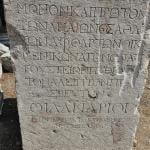Nick Kristof’s analogy expresses his theory of how to understand the problem of America’s inequities. Do you think this analogy is accurate? What would be better?
Imagine a kindergarten with 100 students, lavishly supplied with books, crayons and toys.
Yet you gasp: one avaricious little boy is jealously guarding a mountain of toys for himself. A handful of other children are quietly playing with a few toys each, while 90 of the children are looking on forlornly — empty-handed.
The one greedy boy has hoarded more toys than all those 90 children put together!
“What’s going on?” you ask. “Let’s learn to share! One child shouldn’t hog everything for himself!”
The greedy little boy looks at you, indignant. “Do you believe in redistribution?” he asks suspiciously, his lips curling in contempt. “I don’t want to share. This is America!”
And then he summons his private security firm and has you dragged off the premises. Well, maybe not, but you get the point.
That kindergarten distribution is precisely what America looks like. Our wealth has become so skewed that the top 1 percent possesses a greater collective worth than the entire bottom 90 percent, according to the Economic Policy Institute in Washington.











